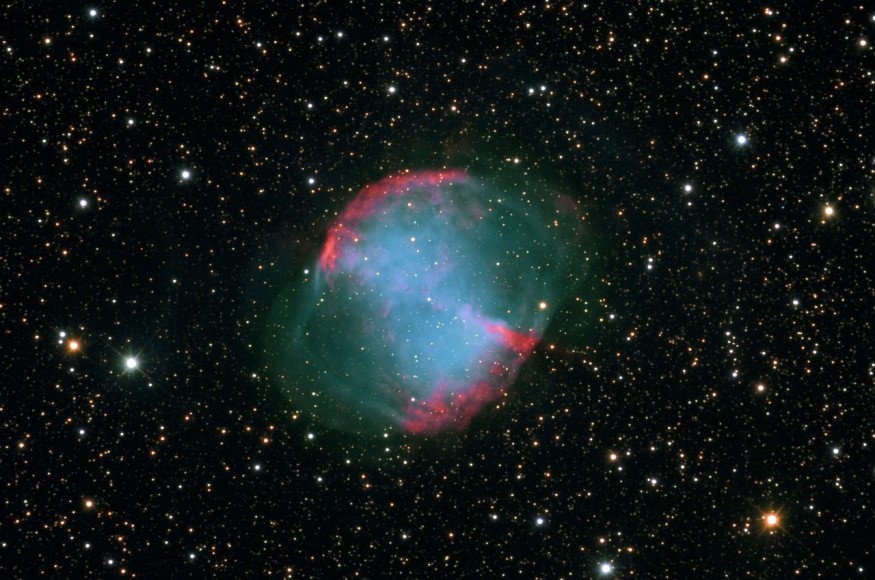
Despite its name, a planetary nebula is actually completely unrelated to planets.
What Is a Planetary Nebula?
The planetary nebula phase marks the final stage in the life of a low-mass star. The phase lasts only a few tens of thousands of years, which is short compared to the thousands of millions of years that low-mass stars shine.
During this final planetary nebula stage, the star sheds out its external layers. This leads to a growing and glowing gas shell that is extremely hot.
This final stage got its name from when astronomers from long ago used small telescopes and thought that the cosmic object seemed planet-like.
Stars with low mass reach their planetary nebula phase as their red giant phase reaches its end. During this point, the star ends up becoming unstable and starts pulsating. This leads to powerful stellar winds that shed the star's outer layers.
These outer layers then move far away from the star. As they do so, they leave behind a bright hot small core known as a white dwarf. This white dwarf expels UV radiation that lights up gas layers that surround the star.
As time passes, the planetary nebula's material gets scattered across space. It eventually becomes part of gas and dust clouds where star formation takes place.
The solar system's Sun, which is a low-mass star, will end up producing a planetary nebula in around 5,000 million years.
Read also: Mythical Supernova Remnant From Star Found: Will It Help Astronomers Reveal Origin of Universe?
Life Stages of Stars
The life cycle of stars depends on the mass of the stars. This mass depends on the matter amount present in the nebula, which is a huge dust and gas cloud from which the star was formed. More massive stars have a shorter lifespan.
As time passes, the nebula's hydrogen gas gets pulled in by gravity and starts spinning. As this spin increases its speed, it gets heated up and transforms into a protostar.
The temperature eventually reaches 15,000,000 degrees. Nuclear fusion then takes place in the core of the cloud. The cloud starts to brightly glow and shine for millions or even billions of years. This stage, the main sequence star stage, is where the Sun is presently in.
As the star glows, nuclear fusion converts the hydrogen in its core to helium. When the supply of hydrogen runs out and the star no longer expels heat, its core ends up getting unstable and starts to contract.
The star's outer shell, which mostly comprises hydrogen, starts stretching and expanding. As it does so, it cools and gets a reddish glow. This marks the start of the red giant phase. Its reddish color is due to it being cooler than the main sequence star stage. It has also become a giant due to the outward expansion of its outer shell. In the red giant's core, helium is fused into carbon.
All stars, regardless of mass, have the same life stages until this red giant phase. After this phase, the star's mass would determine its next stage: the planetary nebula for low-mass stars and a supernova explosion for massive stars.
Check out more news and information on Space in Science Times.










